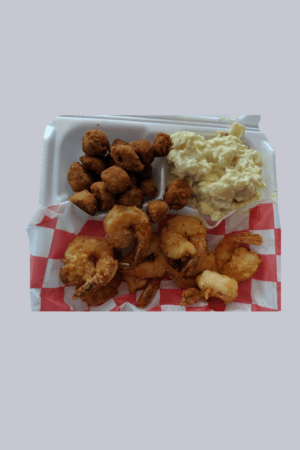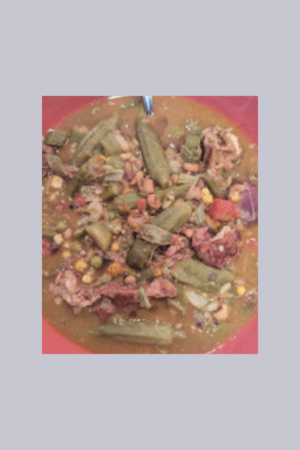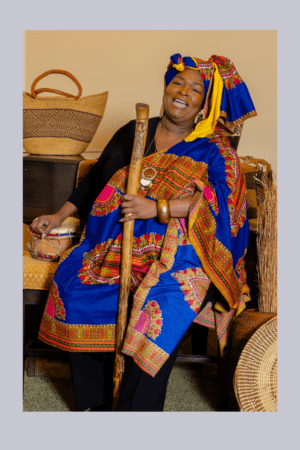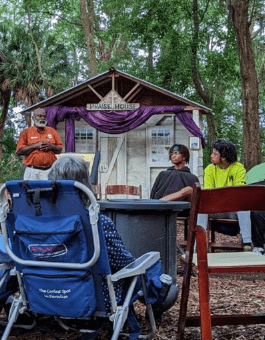
Thoughts of pioneer and prairie living generally come to mind, when the mention of a wood-burning stove and heater comes up in conversation. Maybe the thought of an elder in the family who obsesses over her beloved Aunt Sarah (or similar brand) cast-iron stove comes to mind. If she left it to you, would you use it? No? Maybe, it’s worth it to rethink that decision. There are benefits to owning one.
- While not environmentally-efficient, they are cost-efficient as in lower utility bills and energy-efficient. They can be used all year for any number of reasons, including during power outages.
- Depending on the stove and the extras purchased for older stoves and with newer models, you can comfortably heat your home, and heat your water.
- It can be used in lieu of a fireplace to keep the house cozy and warm or it can be used outdoors to cook or keep a hosting area warm during chilly nights (and days).
Black Home Heritage: Wood-Burning Stoves for Homes and the Memories They Memories they Made
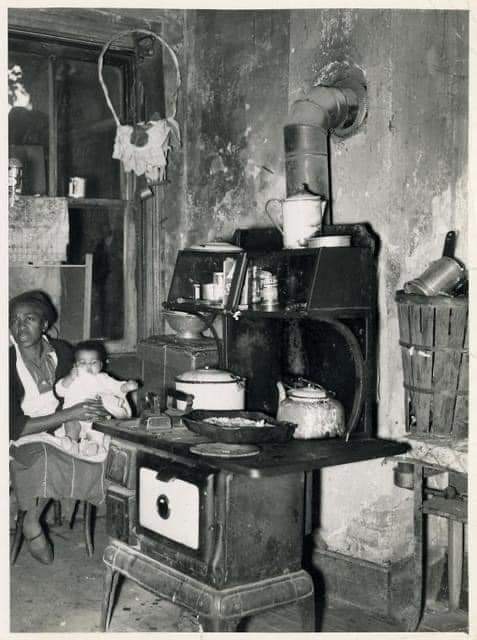
Source: Farm Security Administration (Russell Lee photographer)
Writer Kara Stiff calls her wood-burning stove a matter of heating resilience that enables her family to stay warm and have food during the occasional winter storm outage in North Carolina, where she lives. She says, “It gives me great comfort to know I’d be warm if the power went out…” Stiff also discusses the finer details of cooking on a wood-burning stove, including using its oven. There will be adjustments between using your conventional stove and oven and wood-burning.
Colonial women often cooked or had their enslaved cooks cook and bake in an open hearth. Hearth-cooking was labor intensive as it could be difficult to cook more than one thing at a time, and most – if not all – kitchens were outdoors and detached from the main house. Cast-iron cooking/heating stoves replaced them in popularity foremost due to their convenience. The stoves came in both a wood-burning option and coal heated option. Post Civil War, the more affordable and convenient option for many Black women with their own homes and kitchens, especially in rural areas (coal was not always accessible), was the wood-burning stove. In the South, those stoves proved to be as functional then as they are now. They’re not owned as a matter of popularity but rather as a matter of practicality.
Before you purchase a used, vintage or new wood-burning stove, think about some of the potential health hazards. For example, the effects of burning wood on your lungs. The American Lung Association has a section devoted to lung health and wood-burning stoves. Of the hazards, the site states, “Wood smoke can cause coughing, wheezing and asthma attacks, and lead to serious health issues, such as heart attacks, stroke and premature death. Wood smoke also adds carbon dioxide and methane to the air, both of which significantly contribute to climate change.” But, the site also mentions that in 2015, the “U.S. Environmental Protection Agency adopted new standards for cleaner and more energy efficient wood-burning devices in 2015. Many devices currently meet the 2020 standards and have hangtags showing this certification.”
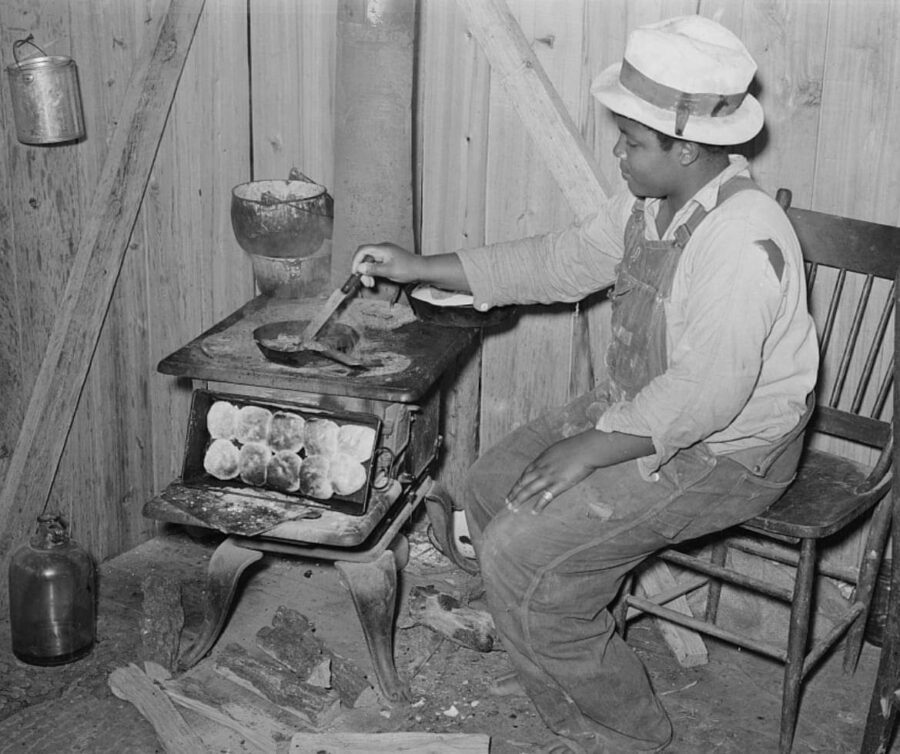
Source: Farm Security Administration (Russell Lee photographer)
Stoves can be adapted and your home’s circulation system improved to accommodate the coziness and convenience of your stove. And check with the sellers of your wood for wood that helps protect your lungs’ health.
The Environmental Protection Agency (EPA) has a valuable page about wood-burning stoves and the environment as well as a checklist for purchasing a stove. They also have a database for EPA-certified stoves.
As spring approaches, it’s a good idea to consider buying a wood-burning cooking and heating stove. The off-season could bring better deals but if you install your stove outdoors, it could be a good purchase in the event your area experiences spring and summer storms, leaving you without electricity and limiting your gas.
Whichever stove you choose for whatever your reasons, practice safety by reading the instructions. It will be worth it to become an expert on your stove to avoid fires and burns.
And on that cheery note, happy shopping or happy recollections about your granny’s stove back in the day.
Source: Farm Security Administration (Russell Lee photographer)
